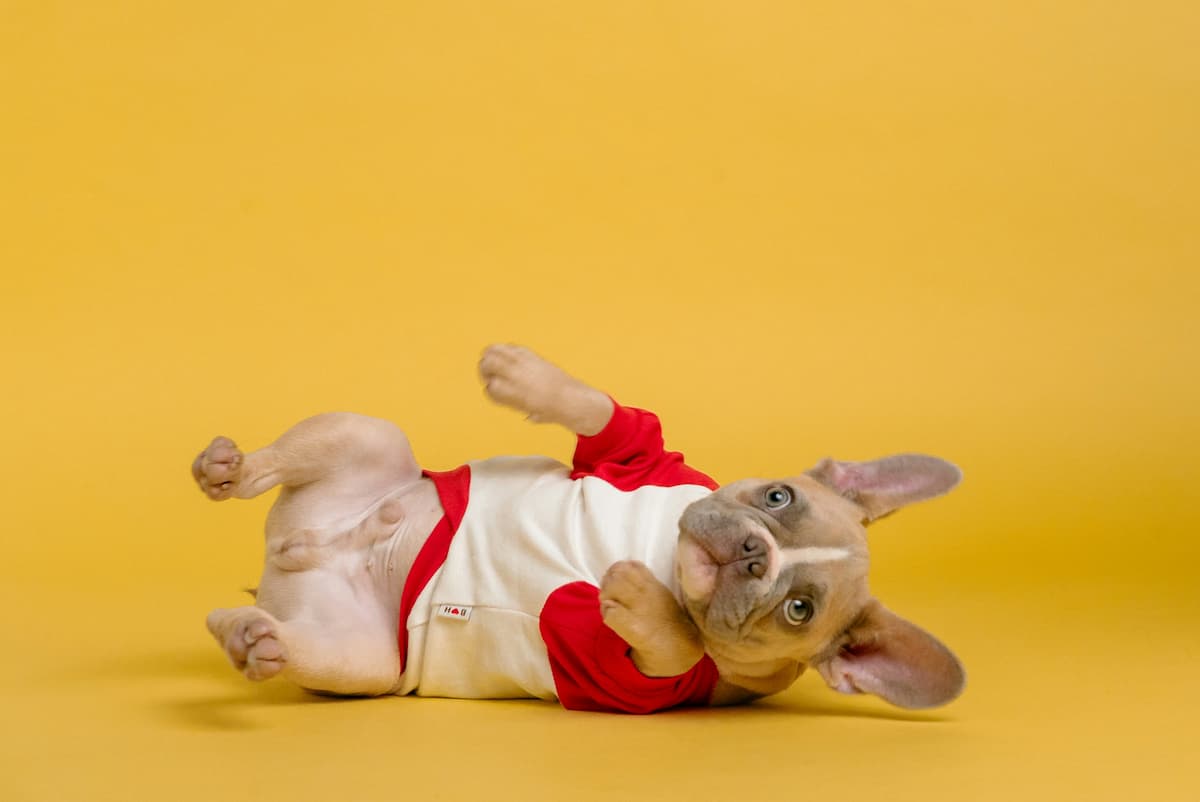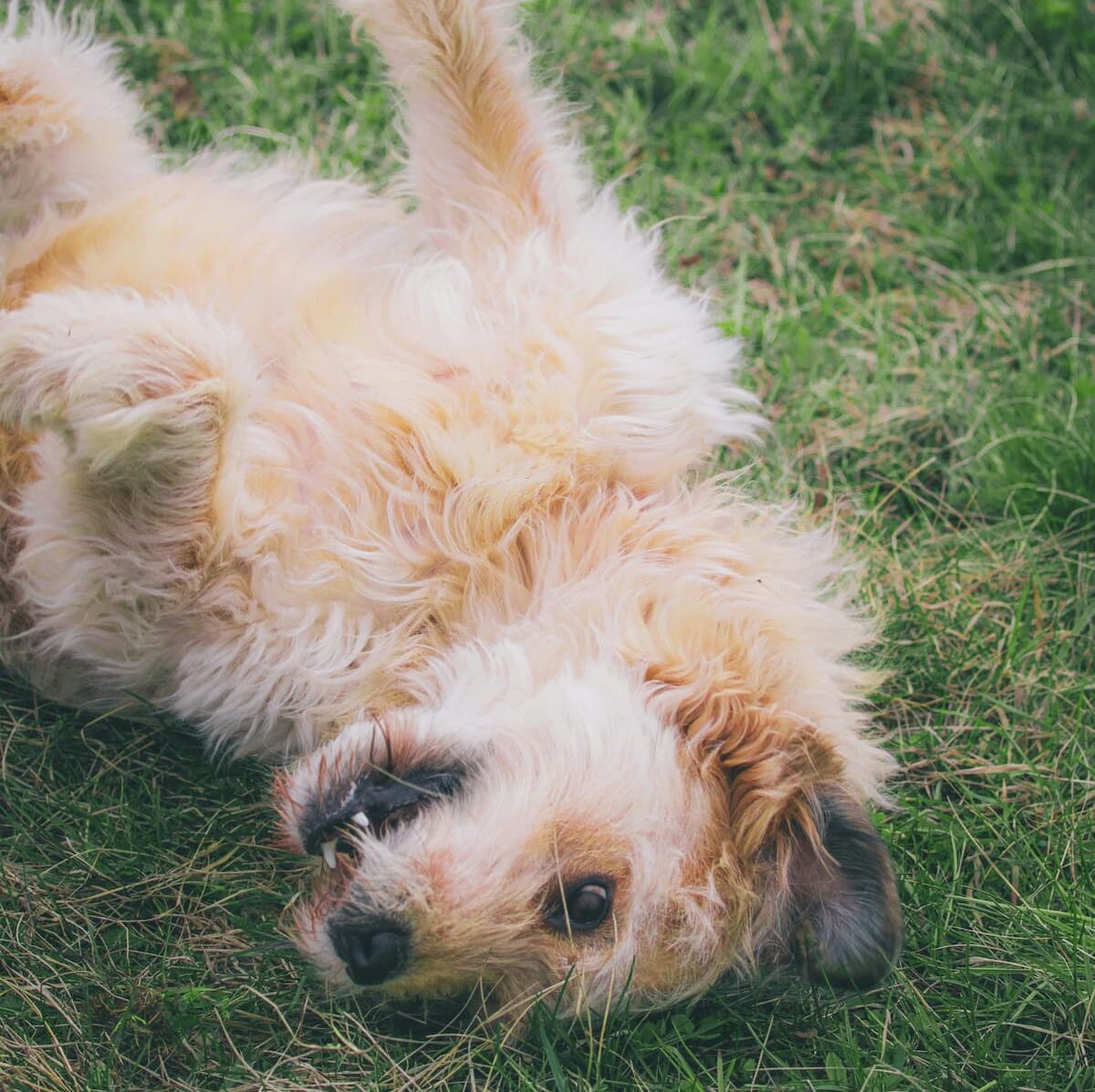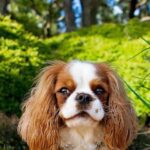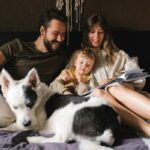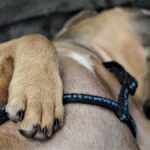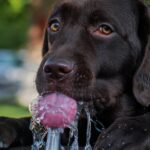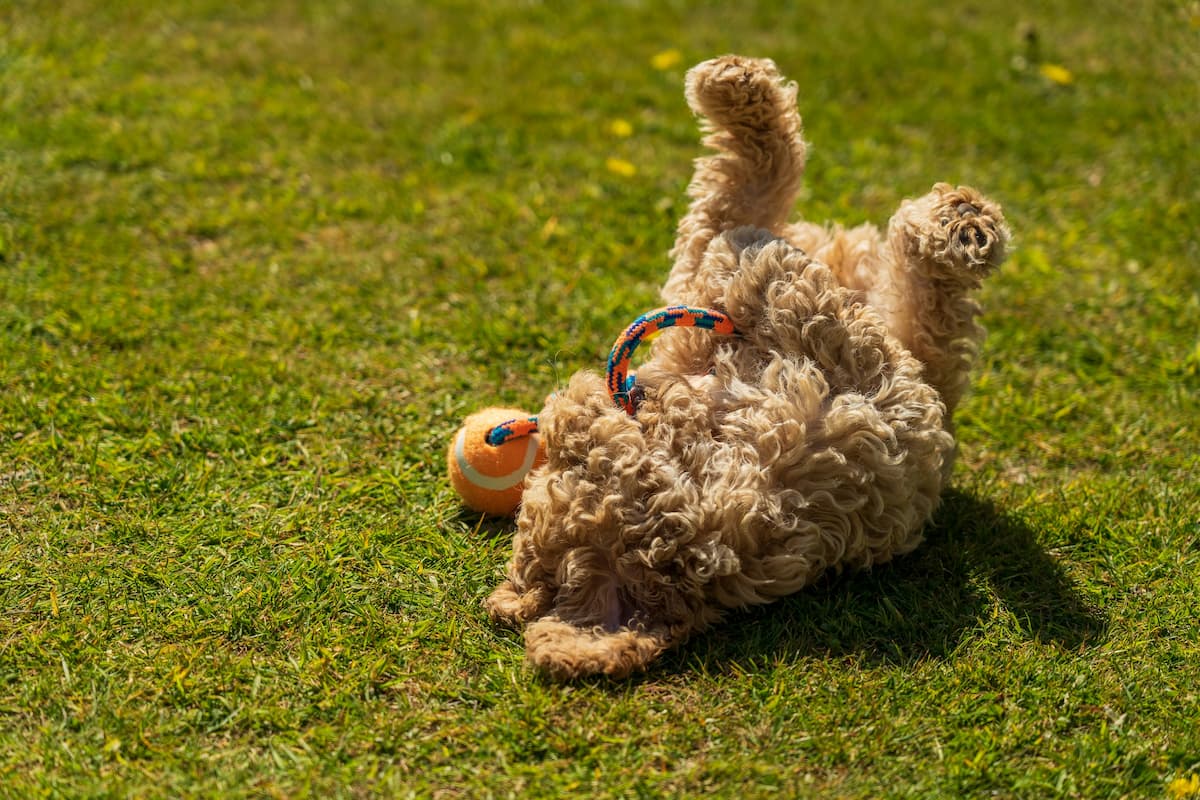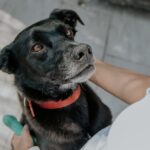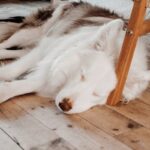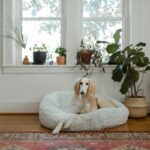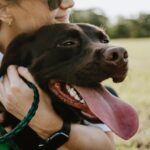Picture this: You’ve just finished serving your beloved pooch their favorite heaping bowl of delicious doggy grub.
They eagerly dig in, wagging their tail in delight as they happily chomp away.
It’s a sight that warms your heart – until, suddenly, they finish gobbling down every last bite.
And just when you think it’s time for a leisurely post-meal nap, they unexpectedly transform into a whirlwind of fur and paws. Confused?
You’re not alone.
Read on to answer the question: Why do dogs roll around after eating?
Why Do Dogs Roll Around After Eating? Unraveling the Canine Post-Meal Ritual
Dogs are truly fascinating creatures. After enjoying a delicious meal, it’s a common sight to see them bursting with enthusiasm, rolling around in sheer joy.
It’s almost as if they have an overflow of energy that needs to be released.
But have you ever wondered why our furry friends exhibit such playful behavior after a satisfying meal? Here are some possible explanations:
Digestive System in Action: One possible explanation for this energetic behavior is the dog’s digestive system at work.
Rolling around after eating can aid in digestion by promoting movement in the stomach and intestines.
This playful motion can help food to properly pass through the digestive tract, preventing any discomfort or indigestion.
Moreover, by engaging in this activity, dogs might experience a feeling of relief and satisfaction, similar to how we feel after stretching or doing some physical exercise.
Releasing Discomfort: As dogs gorge on their food, they occasionally swallow air, leading to discomfort in their bellies. Rolling around could be their way of relieving some of that discomfort. By twisting and turning, they may be trying to expel any trapped gas from their digestive system, allowing them to feel more at ease.
So next time you see your furry friend rolling around after a meal, it might just be their way of achieving that post-food bliss!
Expression of Satisfaction: In addition to aiding digestion, rolling around after a meal may also be a way for dogs to express their contentment.
After consuming a delicious meal, dogs experience a rush of endorphins, which can trigger feelings of happiness and joy.
Rolling and frolicking around might be their way of celebrating an enjoyable dining experience.
Just like we humans might feel inclined to dance or sing when we’re in a good mood, dogs might feel the desire to express their satisfaction through exuberant playfulness.
Releasing Excess Energy: Dogs are naturally energetic animals, and a nutritious meal can provide them with the fuel they need to unleash their playful side.
Rolling around after eating could be a way for dogs to burn off some of the excess energy they have acquired from their meal.
It’s like a burst of excitement that needs an outlet, allowing them to release pent-up physical and mental energy.
This exuberance can be seen as a display of vitality and happiness, highlighting the joy and zest for life that dogs often bring to our lives.
Ancestral Instincts: Another possible explanation for this peculiar canine ritual is that it goes back to their ancestral roots.
Canines in the wild would often roll around in the grass or dirt to mask their scent after eating.
By doing so, they would make it harder for potential predators to track them down.
This innate behavior might still linger in our domesticated dogs, as if they were saying, “I’ve had my meal, now I need to hide my presence to stay safe.”
Scent Marking: When dogs roll around after a meal, they are actually marking their territory through a process known as scent-rolling.
By rubbing their bodies against the ground, they transfer their unique scent onto the surrounding vegetation.
This action serves as a communication tool, signaling to other animals that this particular area is claimed, leaving behind a personal signature that can last for hours or even days
Just like humans might use perfume or cologne to leave their scent on clothes or furniture, dogs rely on their innate instinct to mark their territory in a more earthy and natural way.
Removing Parasites: As they consume their food, there is a chance that they may inadvertently pick up parasites or insects in their fur.
By rolling around in the grass or dirt, they create friction that helps dislodge any unwanted hitchhikers.
Additionally, the rough texture of the ground can act as a natural exfoliant for their skin, removing dead cells and promoting a healthier coat.
It’s nature’s way of providing dogs with a mini grooming session and a refreshing post-meal cleanse.
Tips for Managing the Post-Meal Rolling: Promote Exercise and Independent Play
While this post-meal rolling may seem amusing or odd, it actually serves a purpose for your canine companion.
One way to manage this behavior and promote overall health and well-being is by encouraging exercise and independent play.
Regular exercise is crucial for dogs, as it helps them maintain a healthy weight, supports their cardiovascular health, and provides mental stimulation.
After a meal, dogs often feel a surge of energy and excitement.
Engaging in exercise during this time can help channel their energy in a positive way.
Consider taking your dog for a walk or playing a game of fetch.
Not only will this help satisfy their need for physical activity, but it can also distract them from the urge to roll around.
Additionally, independent play is important for dogs as it allows them to engage their natural instincts and keeps them mentally stimulated.
Providing your dog with puzzle toys, chew toys, or treat-dispensing toys can be effective in keeping them entertained and occupied after a meal. These types of toys can encourage your dog to focus on an activity, rather than engaging in post-meal rolling.
It’s important to choose toys that are safe and appropriate for your dog’s size and breed.
By promoting exercise and independent play after meals, you can help manage the post-meal rolling behavior in dogs.
Remember, every dog is unique, and what works for one may not work for another.
If the rolling persists or if you have concerns about your dog’s behavior, it’s always a good idea to consult with a veterinarian or a professional dog trainer.
Remember, a healthy and happy dog is one that enjoys both physical and mental stimulation.
FAQ
Q: What triggers my dog to roll around after a meal?
A: Picture this: your pup finishes their meal, and suddenly they’re on their back, rolling around as if they just discovered the world’s comfiest spot.
It’s adorable, but what’s the trigger? The answer lies in their ancestry.
Q: Ancestry? Is this some kind of evolutionary thing?
A: Absolutely! Born from their wolf ancestors, dogs still retain some of their wild instincts, even if they’re living the cushy domestic life.
One theory suggests that rolling around after a meal is a leftover behavior from their ancestor’s wild days.
Q: So, what did this rolling behavior mean for wolves?
A: In the wild, wolves would often make themselves vulnerable by rolling in the scent of their prey after a successful hunt.
In doing so, they would camouflage their own scent, making it harder for potential predators or scavengers to detect them.
Q: But why would my pampered pooch want to hide its scent?
A: Good question! Although our furry companions don’t need to worry about predators coming after their next meal, their instincts remain intact.
Rolling around after eating might be an unconscious way for them to hide their food’s scent from any imaginary threats that might be lurking nearby.
Q: So, is it just a survival instinct then?
A: There’s more to it than just surviving! Rolling around also brings them comfort and satisfaction.
Think about how we humans feel after a delicious meal or a long, satisfying nap—blissful, right? For dogs, rolling around acts as a natural way to stretch their muscles, massage their backs, and generally just feel content.
Q: Why do dogs seem so content when they roll around?
A: Dogs have scent glands in various areas of their bodies, and rolling helps them release those lovely odors.
It’s their way of marking their territory and saying, “Hey, this spot is mine!” So, when they roll around after eating, it’s like they’re reclaiming their space and leaving their personal scent signature behind.
Q: Is there anything else I need to know about this quirky behavior?
A: One more thing! Rolling might also be a sign of joy and happiness.
After finishing a delicious meal, our four-legged friends might simply be overwhelmed by the pleasure of the food and the euphoria it brings—kind of like when we do a little happy dance.
They truly are creatures of simple pleasures!
Q: So, should I be worried if my dog doesn’t roll around after eating?
A: Not at all! Just like humans, every dog is unique.
Some may have this “rolling gene” embedded deep in their DNA, while others might not feel the urge to partake in the post-meal ritual.
As long as your pup is healthy and happy, there’s no need to fret.
Closing Remarks
So there you have it, folks! We’ve delved into the mysterious and somewhat amusing behavior of why dogs roll around after eating.
It turns out our furry friends have a few theories of their own.
Some say it’s just a way to mark their territory, while others believe it’s their quirky way of releasing pent-up energy.
Whatever the reason may be, one thing is for sure: watching our four-legged companions happily roll around in the grass or carpet is undeniably entertaining.
Next time you see your pup engage in this peculiar act, remember that it’s just their way of showing their unique canine instincts.
And perhaps, it’s a little reminder to us all that life should be filled with joy, playfulness, and moments that make us stop and enjoy the simple pleasures.
After all, who doesn’t love watching a dog rolling around with pure bliss and exuberance?


